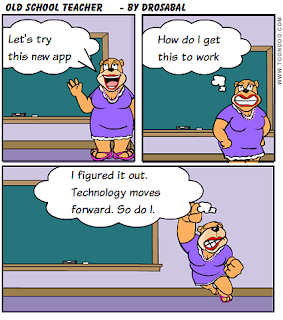During this course (EME2040), I, as a student, was asked to develop and apply skills such as communicating effectively using standard English (COM); critical thinking demonstrated in analysis, synthesis, and evaluation (CT); the use and management of information and technology necessary to collect it from different sources (TIM); the values and responsibilities as part of a diverse society (GRS); and the identification and application of mathematical and scientific principles and methods (QR). I had the opportunity to do so by completing assignments like Discussion Boards, this Blog, a Website Review, a Collaborative Lesson Plan, a WebQuest, and a Teacher Web Page. My skills, effort, and progress were weighted on every project, including my participation and response to classmates. Feedback on my work was always provided by the professor, allowing me to learn from my errors, and to do better.
I learned to use many new tools to enhance my digital creations such as embedding images, videos, and hyperlinks. I appreciate how my professor always emphasized the importance of crediting images, and citations. This was part of the ethical principles I learned. I liked how, on the Blog posts, instead of just reading the textbook chapters and summarizing, I was asked to write reflectively, so that I had to interpret the new concepts I read, and explain how would I use it. This was also eye-opening! I got a lot of good ideas to apply in my classroom in the near future, when I graduate. The textbook was very informative, and I am glad we actually used it (in comparison with other required books from other classes that are not put in use).
Working in group online (to accomplish the Instructional Strategy Wiki specifically) was harder than working in a group that meets face to face. I know that I could have stepped forward and take action (while I didn’t, and that is reflected on my grades too), but overall I think that there was no leadership and, there was a lack of communication. I can only blame myself for this because I did not make sufficient efforts to change it. However, I did learned from it, and I applied it to a Communication online class that I have been taking simultaneously: I suggested ways of communication (text message, emails, Canvas Collaborations, and others); I strived to stay in touch; I actually asked the group to come together as a team, on the same page; finally, I got better results and my professor’s recognition. That was rewarding! The second time around (in EME2040, for the Group Lesson Plan), I kept up close to my team as I understood the importance of effective communication within a group.
Another great aspect from this course was the making of a Rubric, which I will be using a lot as a future educator. Learning to create a Rubric leads to understanding the required criteria in it, and its comprehension throughly. While I believe that the rubric sets fair grounds for all students, and it serves a a great guide for the students to follow what they are being asked to do, I personally think that the Rubric is too “black and white”; it leaves no room for grey areas, and that is what I don’t like from it. For example, in my Teacher’s Portfolio’s rubric I was graded 0 on two criteria; that brought my score down to 70 out of 100, when (from my perspective) my work was much more than 70% of the requirements of the assignment. A rubric does not recognize the energy or the efforts of the student. This is something that I would make differently when I start teaching, as permitted.
Besides learning to use great online tools, I had a lot of fun, and was given the space to get creative and make the work my own. I got to explore tools such as ToonDoo, PowToon, BitStrips (Comic Strips), and StoryBird (Digital Story). I feel more confident about my technological expertise after taking this course. I would definitely recommend it to all college students. I would like to say goodbye with this Gonoodle video (which my first graders love) because it shows exactly how I felt through this semester taking four classes (two of them if Fort Myers, an hour away from home): sometimes tired, sometimes in need of a little push, sometimes ready to rock, and, finally, glad that it is over.
Photo credit to Educational Technology Guy
References:
Coleman, M. (2015). Syllabus for EME 2040 INTRODUCTION TO TECHNOLOGY FOR EDUCATORS. Document posted in Florida SouthWestern State College EME 2040 online classroom. Retrieved 12/07/2015 from https://fsw.instructure.com/courses/964873
Maloy, Robert, Verock-O’Loughlin,Ruth-Ellen, Edwards, Sharon A., and Woolf, Beverly Park (2013). Transforming Learning with New Technologies. 2nd Edition. Boston, MA: Pearson Education, Inc.









